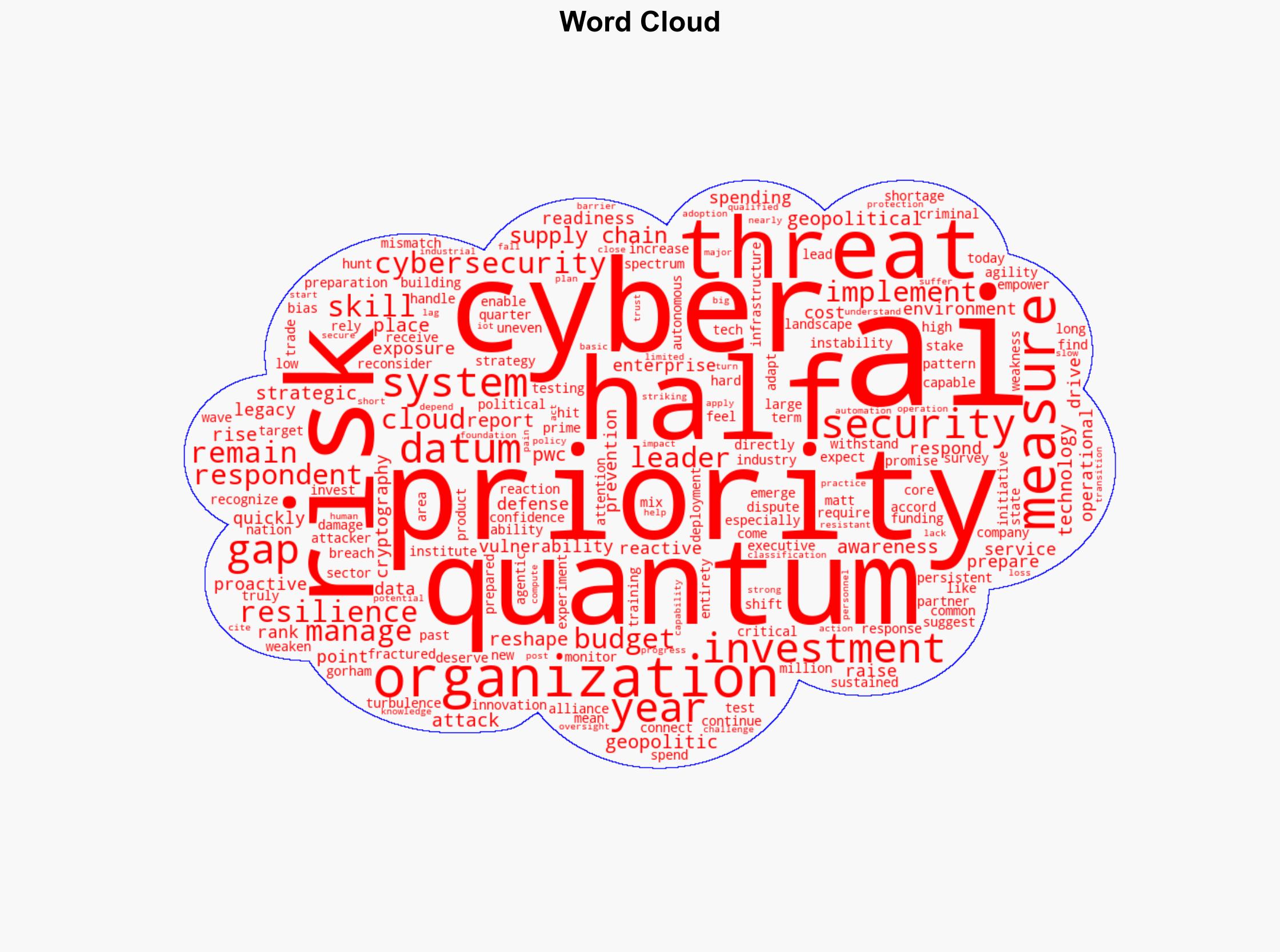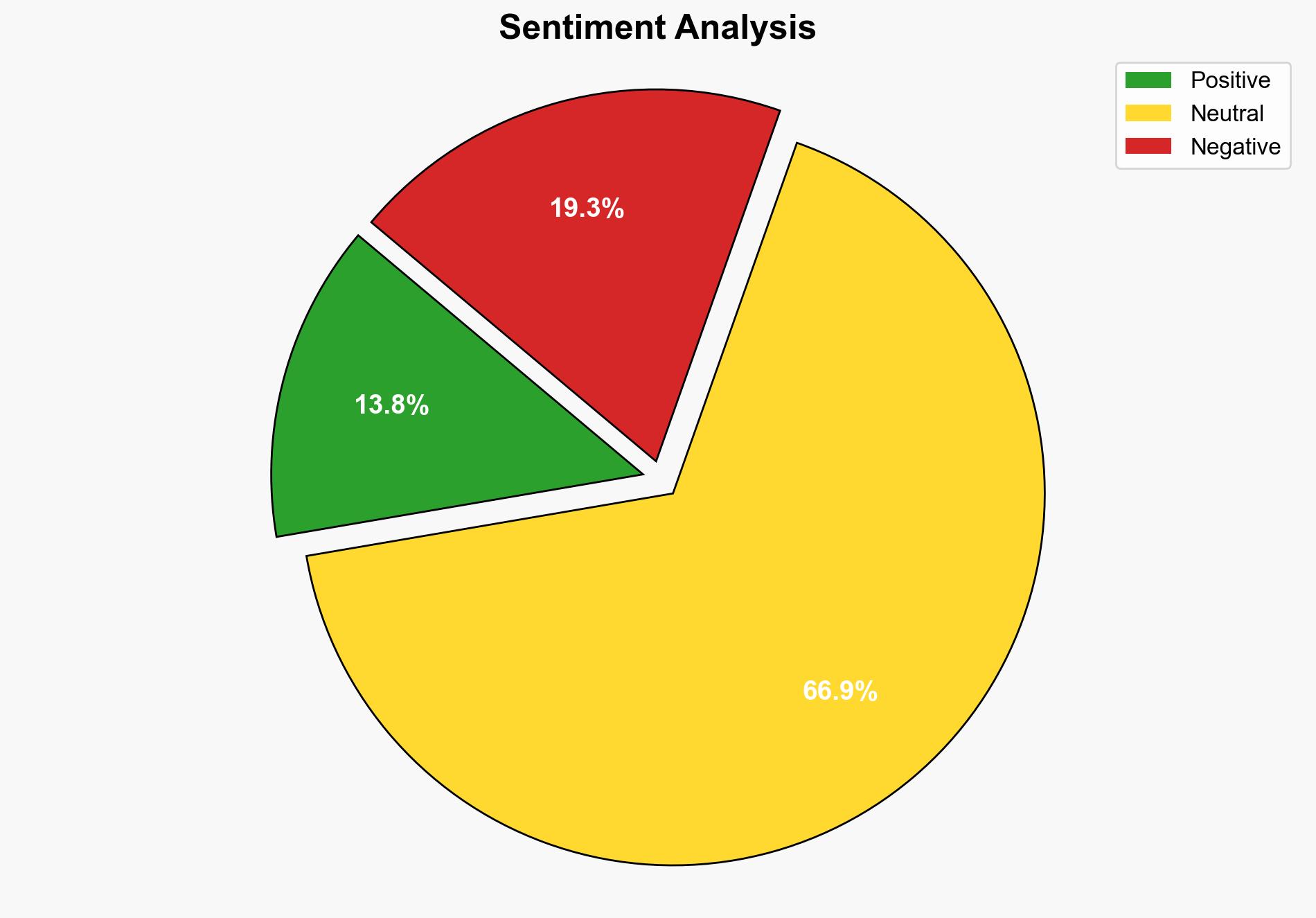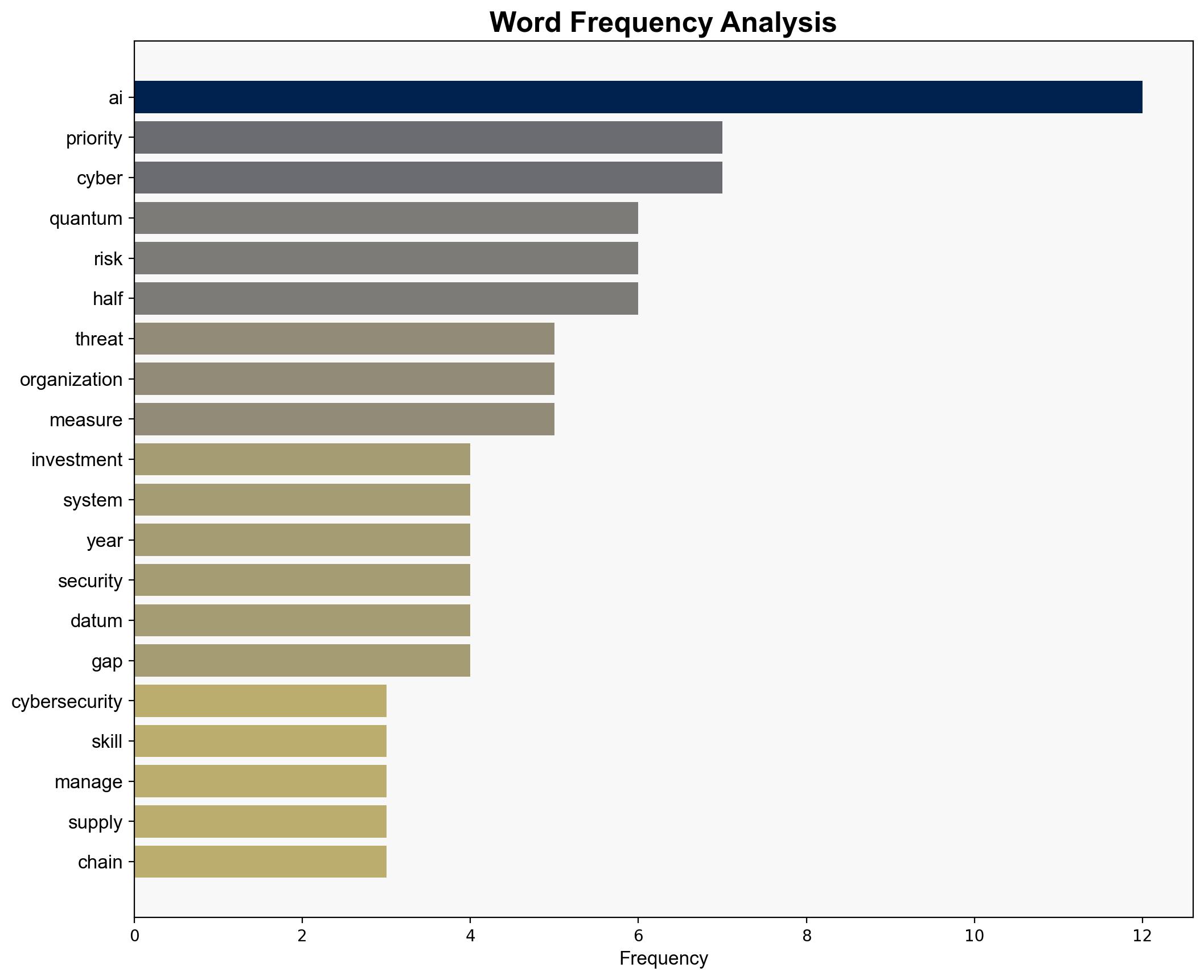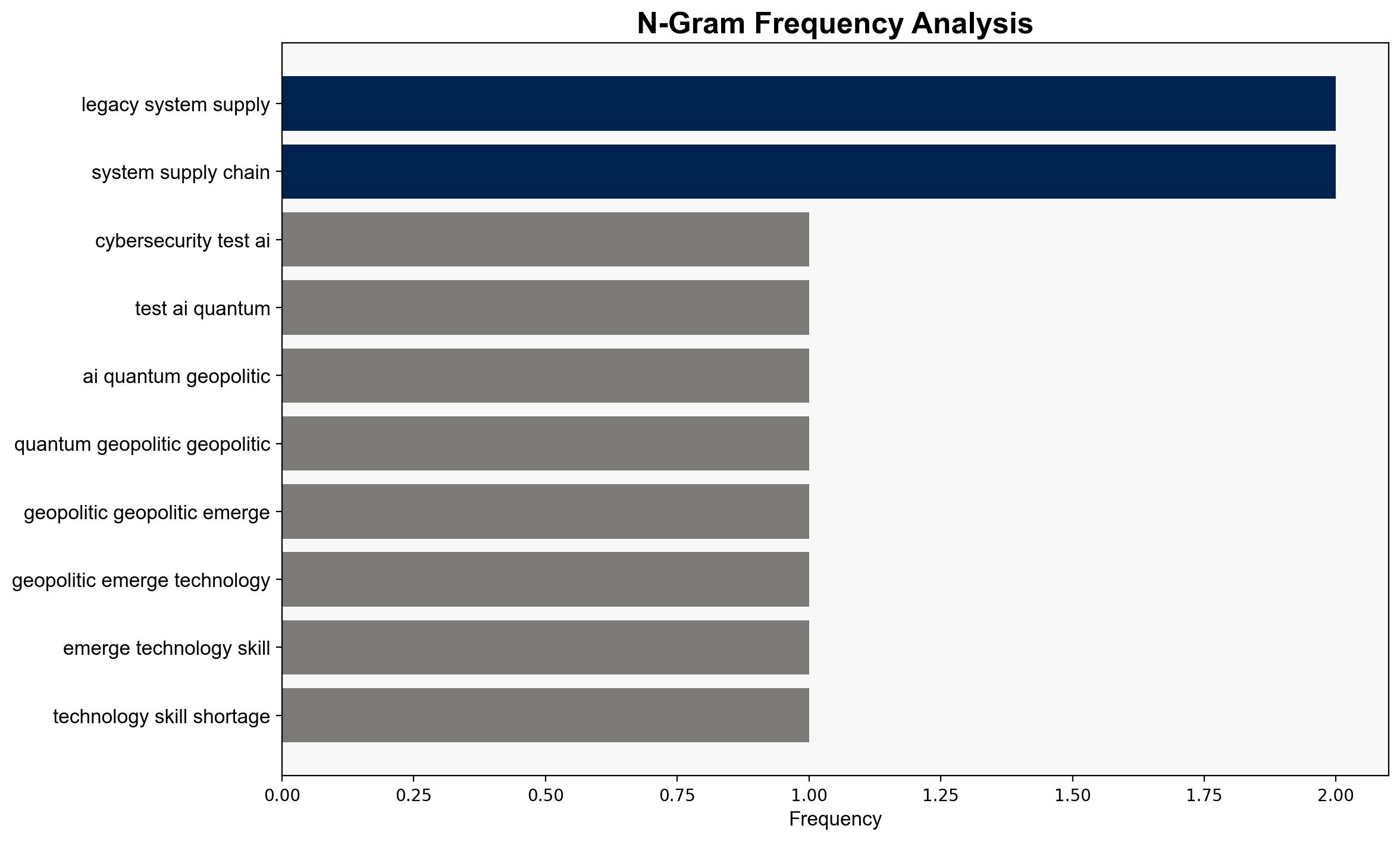Cybersecuritys next test AI quantum and geopolitics – Help Net Security
Published on: 2025-10-07
Intelligence Report: Cybersecurity’s Next Test – AI, Quantum, and Geopolitics
1. BLUF (Bottom Line Up Front)
The most supported hypothesis is that the integration of AI and quantum technologies into cybersecurity strategies is essential but currently underdeveloped, posing significant risks to organizational resilience. Confidence Level: Moderate. Recommended action: Prioritize investment in AI and quantum readiness, focusing on proactive measures and skill development to enhance cybersecurity posture.
2. Competing Hypotheses
Hypothesis 1: The current cybersecurity landscape is inadequately prepared for the integration of AI and quantum technologies, leading to increased vulnerability to cyber threats, particularly from nation-state actors.
Hypothesis 2: Organizations are progressively adapting to AI and quantum technologies, and while challenges exist, the trajectory is towards improved cybersecurity resilience and threat mitigation.
Using ACH 2.0, Hypothesis 1 is better supported due to the reported lack of preparedness, skill shortages, and reactive spending patterns highlighted in the source text. The evidence of persistent vulnerabilities and inadequate quantum readiness aligns more closely with this hypothesis.
3. Key Assumptions and Red Flags
Assumptions:
– Organizations will prioritize AI and quantum technology integration in their cybersecurity strategies.
– Current skill shortages will be addressed through training and managed services.
Red Flags:
– Over-reliance on reactive spending patterns.
– Lack of comprehensive data practices undermining AI effectiveness.
– Potential underestimation of geopolitical influences on cyber threats.
4. Implications and Strategic Risks
The integration of AI and quantum technologies presents both opportunities and risks. The lack of preparedness could lead to increased cyber incidents, economic losses, and geopolitical tensions. The uneven adaptation across industries may exacerbate vulnerabilities, particularly in critical infrastructure and supply chains. The geopolitical landscape, marked by instability and fractured alliances, could further complicate threat dynamics.
5. Recommendations and Outlook
- Invest in proactive cybersecurity measures, including AI-driven threat detection and quantum-resistant cryptography.
- Enhance workforce skills through targeted training programs and partnerships with managed service providers.
- Scenario Projections:
- Best Case: Rapid adaptation to AI and quantum technologies leads to strengthened cybersecurity defenses and reduced threat exposure.
- Worst Case: Continued reliance on legacy systems and reactive measures results in significant cyber breaches and geopolitical tensions.
- Most Likely: Gradual improvement in cybersecurity posture with ongoing challenges in skill development and technology integration.
6. Key Individuals and Entities
– Matt Gorham (Leader, PwC’s Cyber Risk Innovation Institute)
7. Thematic Tags
national security threats, cybersecurity, counter-terrorism, regional focus




